Everything You Ever Need To Know About Coriander 🌱 (Drew's Digest #09)
Where does coriander from?
Coriander is thought to have originated in the eastern Mediterranean or Asia Minor region. It is named after the Latin word, coriandrum, which is believed to be a derivative of the Greek word koriannon or koros, meaning bug. Some say it was specifically named after bed-bugs, because of the unpleasant smell of the immature plant, which later becomes more sweet smelling upon ripening
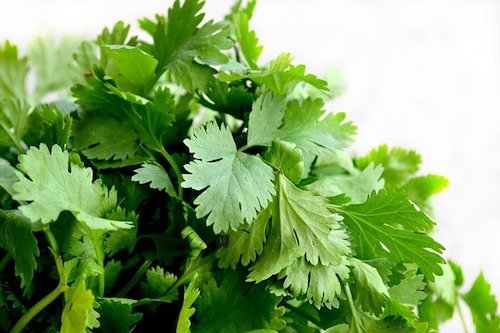
Coriander has a long history of medicinal and culinary uses; appearing in a number of ancient texts, even appearing in Sanskrit as far back as 5000 BC. Egyptians called it “the spice of happiness”, which is most likely due to the alleged aphrodisiac effects it can have and why they planted coriander seeds inside tombs of the 21st dynasty (~1000 BC).
Even the father of medicine, the Greek physician Hippocrates, recommended the use of coriander. Other cultures also believed in all sorts of medicinal benefits attributed to consuming coriander, ranging from easing menstrual flow, creating immortality and aiding in digestion.
Like pomegranate, coriander is also mentioned in the Bible, where it was compared to manna (a food that God gave the Israelites, saving them from starvation in the desert):
What is coriander exactly?
Coriander is an annual herb that usually grows to around 50cm in height. It is part of the Apiaceae family (commonly known as the carrot family) that contains a group of aromatic plants, often with hollow stems, such as herbs like cumin, dill and caraway, and vegetables like carrot, celery and fennel.
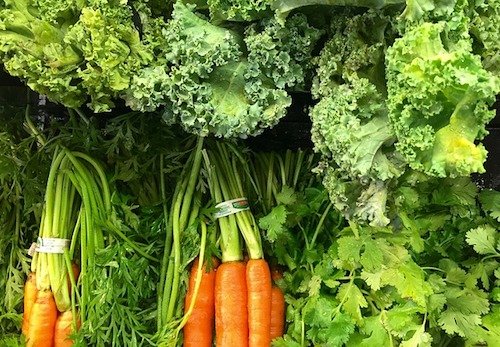
Just about every part of the coriander plant can be used, from the small dry fruit that contains two seeds to the leaves, stems and roots. Each having a slightly different nutrition and flavour profile.
Traditionally, the plant was used for cooking and medicinal purposes, but over time has become an important flavouring and aromatic agent in anything from cosmetics and perfumes to beverages and tobacco, due to the essential oils it contains (notably the terpene, linalool) and the unique citrus and nutty notes it imparts.
The leaves of coriander plants are broad and resemble parsley, sometimes being referred to as Chinese parsley or dhania in India and Africa. In North America, the leaves are called cilantro, which is the Spanish word for coriander, but in other parts of the world, it is simply just coriander (obviously).
When kept whole, the seeds can be used as a pickling ingredient for vegetables, added to sausages and bread, or to alcoholic drinks like gin and beer. The seeds are more commonly used when ground into a powder for spice mixes which are added to packaged products or used fresh in Indian, Asian and Mexican cuisines.
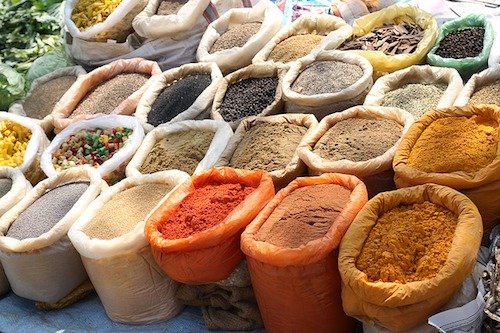
When is coriander available?
Coriander is a winter herb, that grows in pretty much every region of the world, from Europe, the Middle East, Asia to the Americas. The leaves are in season during the colder winter months, before it ‘bolts’ to form a flower, producing the seeds in the warmer summer months.
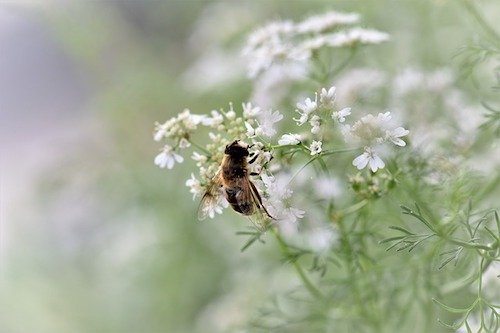
How do I store coriander?
Fresh coriander leaves will last the longest when stored inside the fridge in an upright container with a little water to coat the roots, and covered with a plastic bag to minimise the amount of gases that can enter (just like last weeks asparagus). I would recommend changing the water every day or two.
The seeds can be kept in airtight containers and will last a long time, if not exposed to oxygen. Ground seeds cannot really be prepared and stored for later use and should be used as soon as possible, as they will degrade very fast. So when buying the spice component of the plant, always go for the whole seeds, and just grind them up when needed.
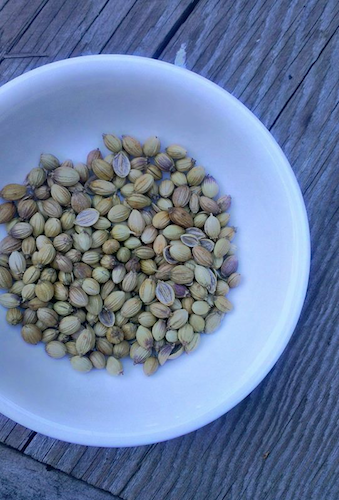
How do I use coriander?
Coriander is most commonly used in Mexican, Indian, African, Middle Eastern and Asian cuisines, added to anything from soups, stir-fries, sauces and chutneys. The leaves are great for garnishing any meal (like the Thai Green Curry below) or side dishes like salsa and guacamole.
The seeds can be added to stews, soups and slow-cooked meals or even roasted as a snack like dhana dal. The ground-up powder is fundamental to many spice mixes like garam masala and curry powders.
Did you know?
Some people really hate the smell and/or taste of coriander, describing it as tasting dirty or soapy. A recent study found that that the reason for the soapy taste is due to a difference in our genetic makeup. The number of people that detected a soap like taste can vary from around 4 – 14% of the population, depending on ancestry.

Why should I eat coriander?
Coriander has many nutritional and medicinal benefits. Coriander seeds are made up of around 40% fibre, and in just 1 tbsp we can access a whole bunch of essential minerals (like iron, magnesium, copper and calcium) and omega-6 fatty acids.
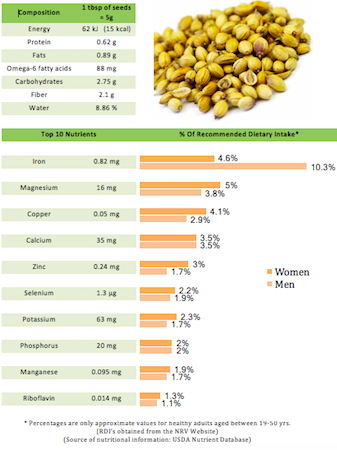
Apart from the seeds, the leaves which are perfect for garnishing and are super low in calories, have a huge amount of Vitamin K in such a small portion.
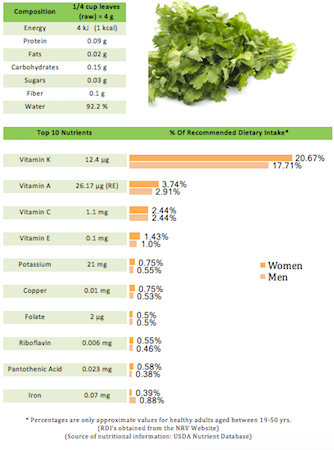
In addition, studies have also shown that coriander extracts;
- can help to treat diabetes (in mice) by reducing hyperglycaemia (high blood glucose).
- reduce bad cholesterol (LDL) and lipids (fats) that are circulating in the bloodstream (i.e. anti-diabetic effects).
- produce oils and alcohols that have strong anti-bacterial activities on human pathogens.
contain the essential oil, citronellol, which can inhibit ulcers forming in the mouth, stomach and small intestine.
A number of other studies have concluded that chemicals from coriander leaves and seeds may also contain the ability to provide anti-inflammatory, anti-mutagenic, anti-depressant and anticonvulsant effects on humans.
Images are my own, sourced from Pixabay or linked
Drew's Digest #08 - Three Meals or Six: Is Grazing the Cause of Obesity?
Drew's Digest #07 - Everything You Ever Need To Know About Broccoli
Drew's Digest #06 - Five Hidden Sources of Vegan Protein 💪
Drew’s Digest #05 - Everything You Ever Need To Know About Lemons 🍋
Drew’s Digest #04 - Vitamin K: The Blood Clotting Compound 🥒
Drew’s Digest #03 - Everything You Ever Need To Know About Pomegranates 😍
Drew’s Digest #02 - How Genetics Will Define Our Future Diets 👨🏻🔬
Drew’s Digest #01 - Everything You Ever Need To Know About Avocados 🥑
CONNECT WITH ME ON

As a BSc. holder In Botany and Ecological Studies, I try to let people in on a big secret... There's so much good health plants have to offer; if only we are willing to explore and be open to lifestyle change. Kudos on this work man... I follow you!
100% agree buddy. Good nutrition leads to good health, and plant foods have the biggest bang for your buck ✌🏼
Always loved Coriander/Cilantro, we grow it too. Was waiting to see if you included the "soap smell" thing, and you did. We never thought it tasted like soap, but if we think about it too much while eating it fresh off the vine, we can visualize the soapy taste.
Wanna read up on a new crypto to hit the scene?
https://steemit.com/bitcoin/@harpooninvestor/cryptocurrency-bitcoin-selloff-today-tron-based
Thanks for your input. Sure! Always interested in new cryptos to look into
This post very important
Thank you , I appreciate you taking the time to read. Have a great day
You got a 6.95% upvote from @mercurybot courtesy of @thedrewtrott!
This is just awesome and priceless information.
Thanks heaps ! I love writing content that is simple and informative
I'm going out to buy some of those, quite depressed thsi lately. It might help rather than but non-organic pills.
Nice writing about food - :) I should have some coriander from my garden today!
Ooohh I've never been able to grow coriander, I truly have a black thumb. Can you give me any tips ?
Great article, I love coriander , can't get enough of it. But it's true that up until now I didn't know all of the benefits and the story it holds.
I read an article the other day saying that it is one of , or the only foods that the taste is determined by your genes. It either tastes great or tastes like dirt.
This is why people either love it or hate it.
Any thoughts ?
Exactly! Genetics play a huge role in how we taste and perceive different foods and recipes. Personally I love coriander and will have it on anything 🤙🏼
dido!
I recently developed the same love for arugula (roquette). Its got such an earthy peppery taste.
I put it in my pasta, pizza, burgers and of course i love making salads with it.
I would definitely recommend trying it in your pasta next time (small handfull goes a long way)
@originalworks